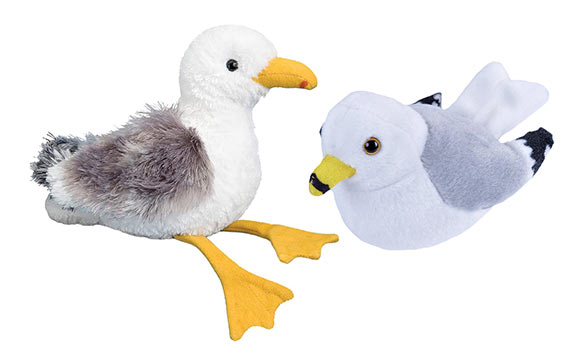


The California Gull (Larus californicus) is a medium-sized gull with a length of 17 inches and a wingspan of 52 inches.
It is slightly smaller than the Herring Gull, but resembles it in all plumages. The California Gull has a bright yellow bill with a red spot at the gonys. The legs are yellow, the eye is brown, the head, neck, breast and belly are white, the back and upper wings are grey, the primaries are black with white tips. Juveniles are brown with dark brown primaries and tail. The Ring-billed Gull is similar but has a black bar across the beak.
This gull is common along the Pacific Coast in winter and inland in breeding season, nesting in large colonies on the prairies.
During the breeding season it prefers barren islands on fresh, brackish or alkaline lakes, (such as Mono Lake in California or Great Salt Lake in Utah) shores of lakes or ponds and marshes. Preferred nesting sites have sparse vegetation with the nest a scrape on the ground in elevated, boulder-strewn areas.
The clutch size is from 1 to 3 eggs. The incubation period is about 25 days. It takes the young about 45 days to fledge. There is one brood per year. Diet consists of insects, carrion, aquatic invertebrates, earthworms, young birds, fish and rodents.
You can find Seymour the Douglas Gull and a Wild Republic Audubon Bird Ring-billed Gull at Jeannie's Cottage LLC.



